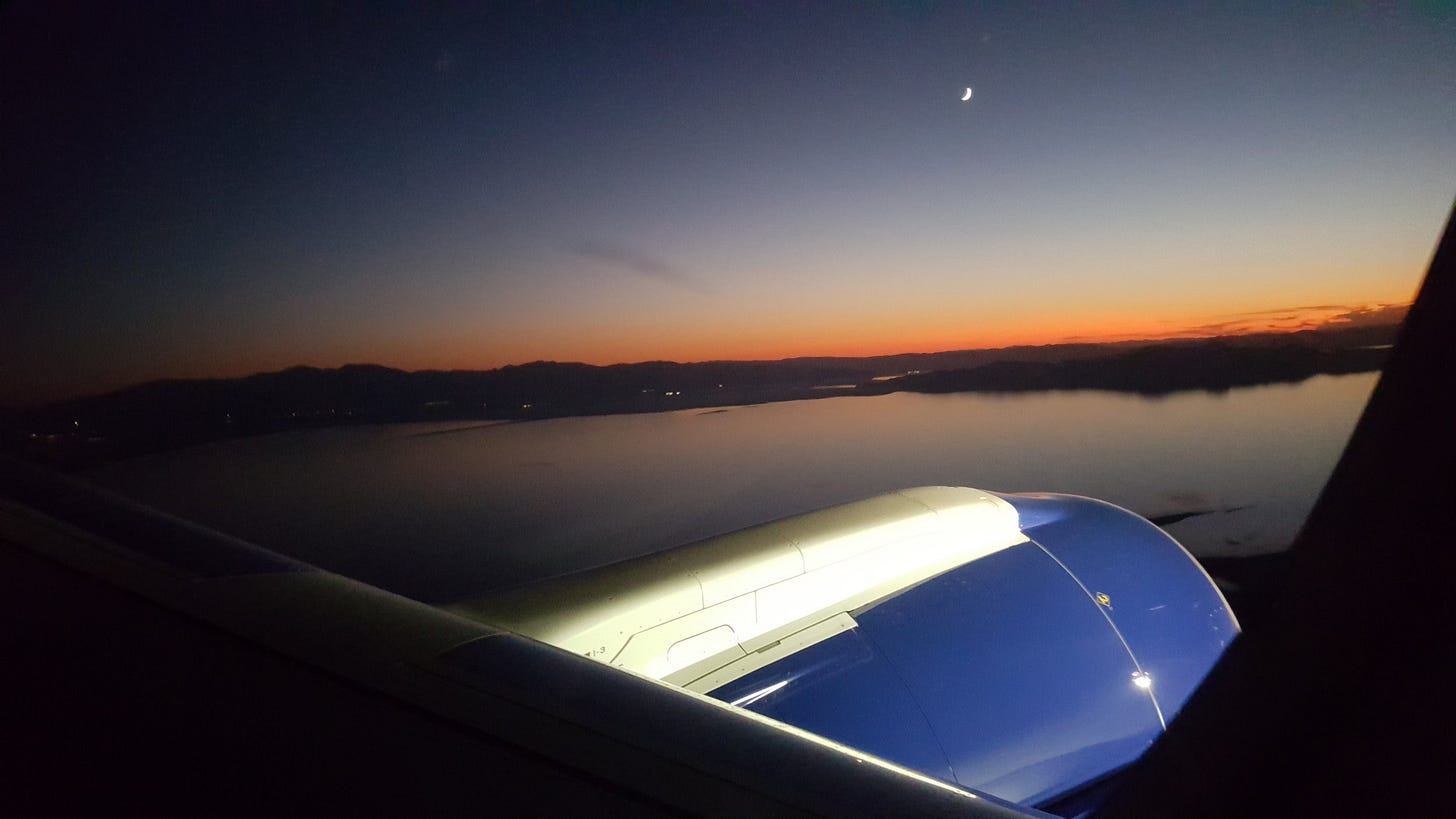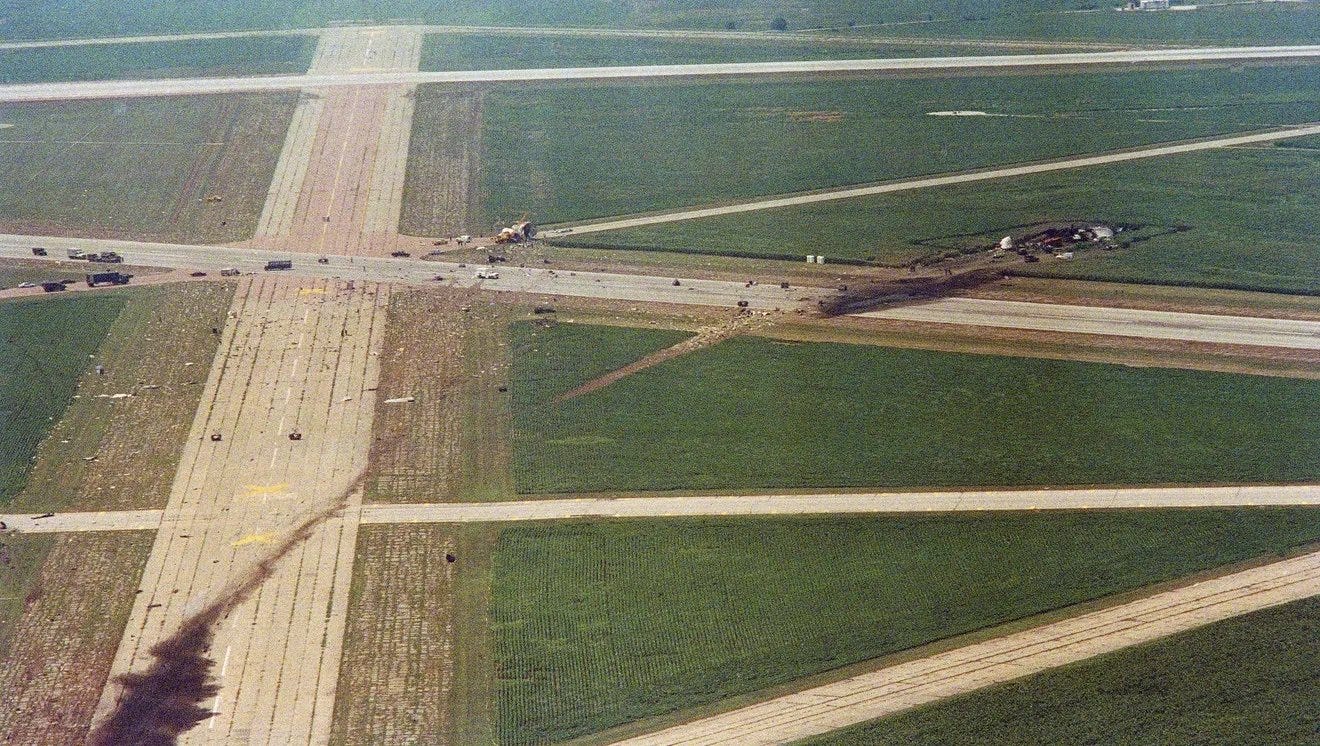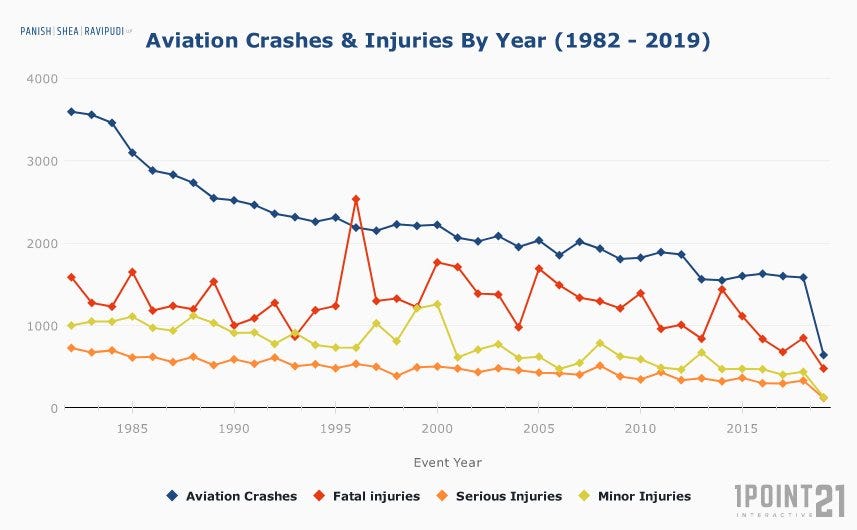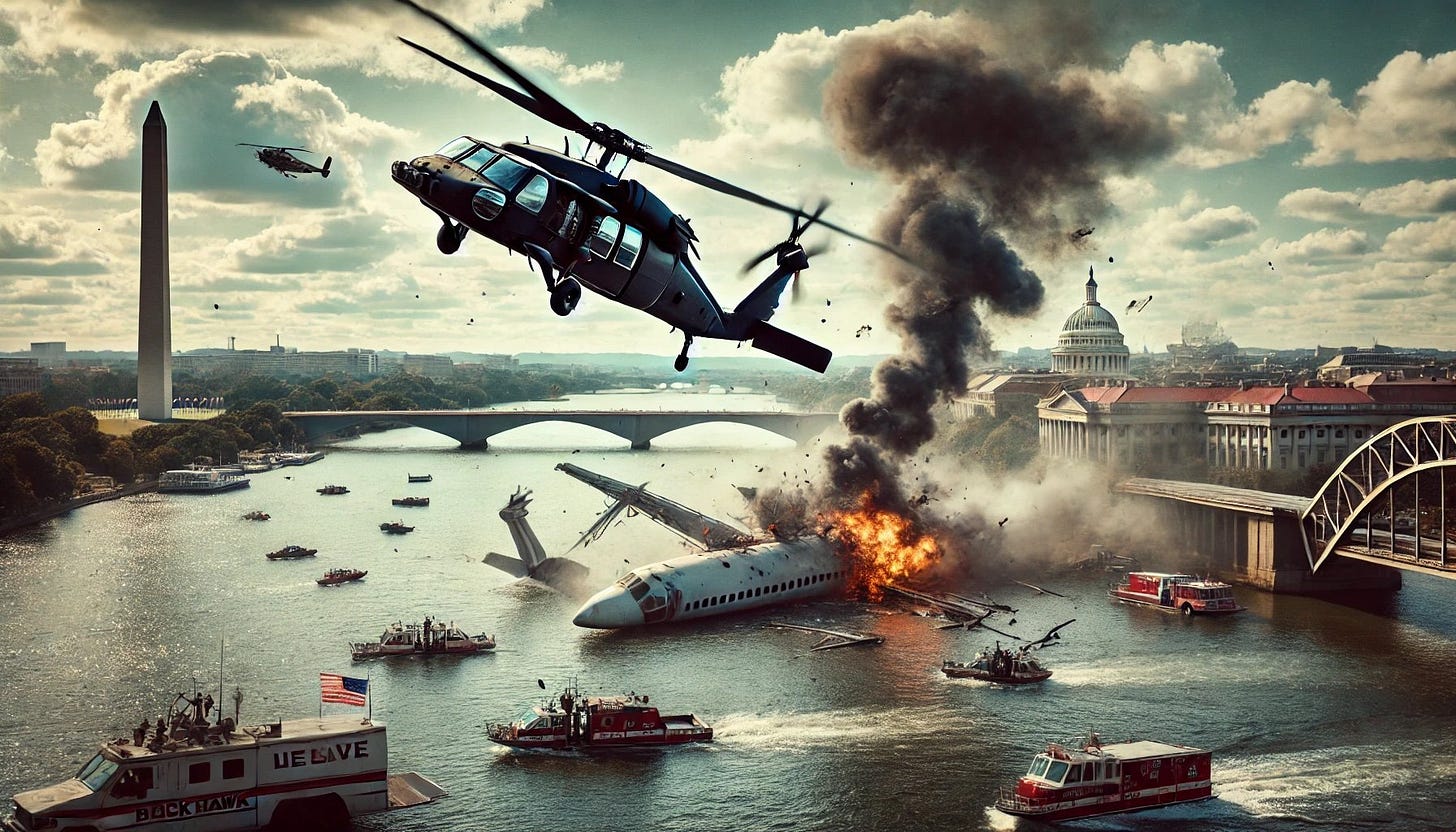Airplane Crashes
Throughout my childhood, I used to fly several times a year. My parents got divorced when I was five, so I would fly to visit my dad every summer and at Christmas. I wasn’t particularly scared of flying at first, until I got older, into my teens, when I realized how much I had to live for.
As a little girl in the 1970s and 80s, I usually flew alone, designated as an “unaccompanied minor.” Unbelievable as this may sound now, that meant wearing either a big 'ol lapel pin or sometimes a full-on beauty pageant sash advertising my unaccompanied status across my torso. (Yes, the 70s were a wild time!)
Back then, of course there were also smoking and non-smoking sections on every plane, full meals included in the ticket price and served with silverware. But my favorite aspect of flying had to be the glamorous stewardesses (long before they were called flight attendants) who doted on me and shepherded me from gate to gate.
It always made me feel like I was a part of the action, marching briskly through the busy airport flanked by these polyester-clad amazons. They always seemed so poised and authoritative answering questions from passengers and exchanging pleasant pre-flight banter with the pilots. It never struck me as a dream job, though… not like cruise director or private detective.
July 19, 1989
The summer I turned 16, a plane crashed in Sioux City, Iowa. It was just one of many major crashes that year, but this one happened in the US, in broad daylight on a beautiful summer day. The nightly news played that footage over and over for days, and who could blame them? The grainy 30-second video was just so irresistibly horrific.
United Airlines Flight 232 Crash
At first you see the DC-10 banking towards the runway, coming in too fast over the trees, but not in obvious danger. It briefly disappears behind a building and the camera swings around to capture it a second after touchdown, its underside dragging an explosive tail of flames like a comet.
Physics and engineering briefly battle for the fate of flight 232 before the conflagration engulfs the wing in an enormous fireball. The plane cartwheels grotesquely and begins to disintegrate, coming apart as thick clouds of black smoke spill into the sky.
At last, the broken fuselage comes to rest in a cornfield, leaving a deep, charred trench across the mangled tarmac.
You would never guess it watching that video, but of the 296 people on board, 185 survived.
Years later, Jan Brown, the lead flight attendant, reflected on that day: “I have not found the appropriate word that can describe the pure terror of an airplane that was always my friend, that I knew in the dark. But now it's a metal tube, and it holds my fate. And there's nowhere to go. There's nowhere to hide."
That’s just about the best description I’ve heard of why plane crashes are so inhumanly terrifying, despite all the statistics about how incredibly uncommon they are.
Leaving the Earth
The harrowing tale of United Airlines 232 is told by flight instructor Denny Fitch in an amazing interview with documentary king Errol Morris in an episode of his First Person series called "Leaving the Earth." Despite the horror and tragedy, his story is one of the most beautiful, life-affirming things I've ever seen.
Errol Morris’ First Person “Leaving the Earth”
I’m just glad I grew up before we had all these TV shows like "Mayday" and "Air Crash Investigations," where they deconstruct and reenact the worst avian accidents of all time. I can watch those shows now with all the queasy vicarious horror their creators intended, not just because flying is safer than it’s ever been, but also because I fly a lot less than I used to.
Safer than ever
Fortunately, flying has been getting safer and safer over the last few decades. According to the Bureau of Aircraft Accidents Archives (BAAA), total aviation crashes have decreased nearly 56 percent since the early 1980s.
You can find details about every catalogued accident or skip to the statistics for a list of every year since 1922 ranked by the number of fatalities (and why wouldn’t you?).
The five worst years were all during WWII, of course. After that, the worst year was 1972 with 3,355 deaths. 1989, the year that severely tested my faith in flying, clocks in as the 7th deadliest year since WWII with 2,603 deaths.
Between 2011 and 2024, the number of deaths was less than 1,000 per year every year except for two. 2023 had the fewest, 229, in more than a century of commercial flight.
So, it’s undeniably true that flying is safer than it’s ever been. But that doesn’t make it any less unsettling when these increasingly rare, yet horrific accidents do occur.
Black Hawk Down
The recent mid-air collision over the Potomac River between a Black Hawk helicopter and a commercial plane carrying 60 passengers and four crew members, has made flight safety a hot topic again.
It was the deadliest plane crash since November 2001, when 260 people were killed in New York state, and it was the first commercial plane crash in the US since 2009, when 50 people were killed near Buffalo, NY.
February 1, 2005
It’s weird that last week’s crash happened just minutes from the White House, not in a conspiratorial sense, but in terms of symbolism. It reminds me of the Space Shuttle Columbia disaster, of which I just realized today is the 20th anniversary.
The shuttle suffered some critical damage to its insulating foam during launch, which resulted in a catastrophic failure of its heat shield, causing it to explode and break up when it reentered earth’s atmosphere. Most of the debris from the craft was scattered across then-President George W. Bush’s adopted home state of Texas.
At the time, it seemed almost like a divine indictment from on high, a horribly on-the-nose metaphor for the blood on the hands of the swaggering cowboy in chief, architect of the wars in Iraq and Afghanistan.
If we’re inclined to see these things in terms of metaphors and symbols, and I think as humans we often are, I wonder what this crash is trying to tell us about the current state of the world...
I asked ChatGPT what it thinks… here’s that image.
My heart goes out to all the victims’ families, and the families of every crash victim throughout the history of flight. It may be the safest method of travel by orders of magnitude, but our logical faculties are confounded when the numbers for any particular accident are so very high.
Stay safe out there, everyone, and thanks for reading.





